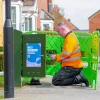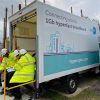Gigaclear Beat BT and Virgin to Deploy FTTP Broadband in Crazies Hill
Fibre optic ISP Gigaclear has beaten both BT and Virgin Media by reaching a deal to bring 1Gbps “ultra-fast” broadband services to the rural village of Crazies Hill in Berkshire (England), which will also benefit the surrounding communities of Cockpole Green, Warren Row and Knowl Hill.
The tiny and comically named village of Crazies Hill first hit our headlines last November (2015) after the Government’s then Home Secretary, Theresa May (MP for Maidenhead), stepped in to help support local residents in their campaign for better broadband (here). Sadly the initial hope of roping in BT to do the work didn’t pan out.
Advertisement
At present the local state aid supported Superfast Berkshire project is already working with Openreach (BT), Gigaclear and Call Flow to roll-out “superfast” (24Mbps+) capable broadband networks to 95.6% of the county by the end of 2017, but the above villages have largely existed outside of that focus.
Poor connectivity and sub-2Mbps speeds have long been a problem for the area and last year’s intervention had hinted towards the possibility of BT deploying their “fibre broadband” (FTTC/P) network into the area, although this could have taken until 2018.
Separately Virgin Media recently selected the nearby village of Wargrave to benefit from their on-going network expansion (here), which the operator said could have conceivably supported an extension to Crazies Hill by around 2018.
However the Henley Standard reports that both BT and Virgin’s offerings would also involve £100,000 to £200,000 of funding from the community to cover about 150 homes in Crazies Hill and Cockpole Green (i.e. around £660 to £1,320 per resident). A tough ask for such a small area.
Advertisement
By comparison Gigaclear’s network was already expected to reach several areas around Wargrave (not unlike BT’s own roll-out in the region) and all they required for the extension was for 40% of locals to make a commitment to sign-up (plus a £100 activation fee and an optional £95+ installation charge [self-installs would make this free]).
A Gigaclear Spokesperson said:
“[We] would like to thank all our supporters who have worked extremely hard to secure better broadband in your area. Without their efforts and your support, we would not be building in your community.”
Local residents said they were “highly delighted” by the agreement and the roll-out phase could now begin as soon as October 2016, with completion being expected around May 2017. However the now Prime Minister, Theresa May, warned in a canned statement that “there is still much work to be done across the constituency.“
Mark is a professional technology writer, IT consultant and computer engineer from Dorset (England), he also founded ISPreview in 1999 and enjoys analysing the latest telecoms and broadband developments. Find me on X (Twitter), Mastodon, Facebook, BlueSky, Threads.net and Linkedin.
« Mobile Operator O2 UK (Telefonica) Moots Market Float Before 2017


















































Comments are closed